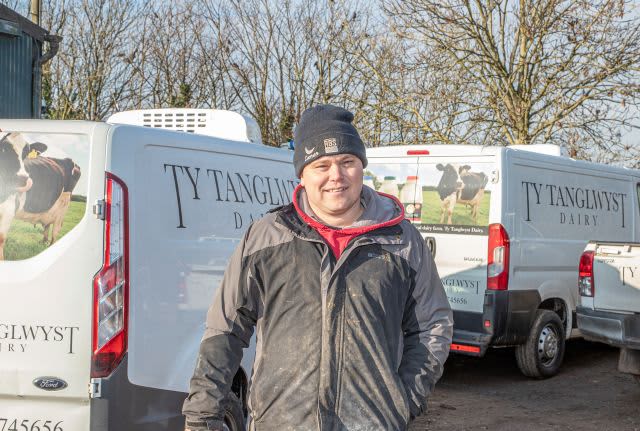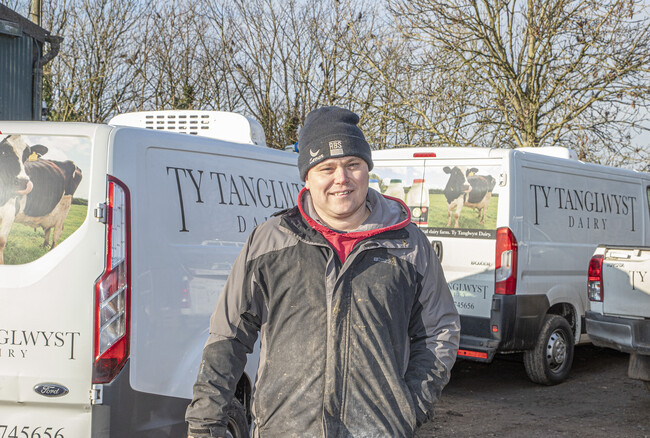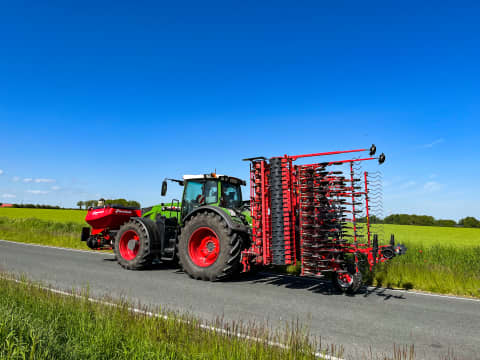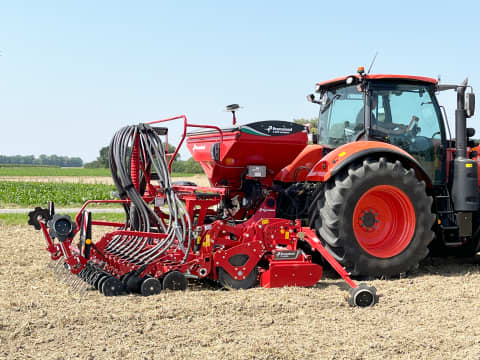With a desire to seek the true value of his family farm’s milk, Rhys Lougher instigated the development of an on-farm milk processing plant.
That was in 2004, and since then, the Ty Tanglwyst Diary brand has continued to evolve, and now supplies a range of milk, cream and butter products to an increasingly local market.
|
"Everything we do is achieved with sustainability in mind," Rhys Lougher, farmer |
“We were getting 17 pence/litre and milking 65-70 cows, and it didn’t take a rocket scientist to work out how unsustainable that was,” explains Rhys. “I wanted to find a way to insulate our business from the volatility of market forces, and take control of marketing our milk.”
Based at Ty Tanglwyst farm, Bridgend, the Lougher family now runs a 300-cow pedigree Holstein Friesian herd, which sees 130 animals through the parlour, three times a day. With sexed semen and a closed herd, the farm has also developed a keen interest in genetics to produce the best animals it can.
“We over-produce replacements, but it also provides a quality supply of first calving heifers to market, with strong bloodlines,” he says. “Our herd produces an 11,000-litre average, and that gives our processing plant a supply of around 1.2 million litres/year.”
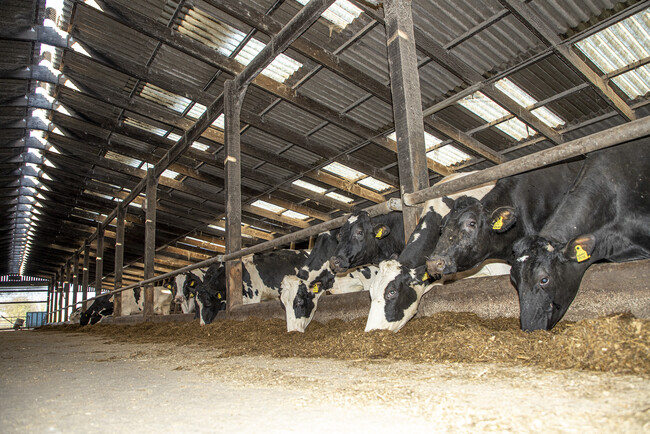
Around 50% of Ty Tanglwyst Dairy’s milk goes out on doorstep deliveries. The remainder is supplied to ice cream makers, schools, cafes, restaurants local shops and hoteliers.
“99% of our milk is delivered locally, so food miles are minimal,” he says. “And our customers like that. We run open farm Sundays and other events that also bring school children onto the farm – educating them about agriculture is very important. And everything we do is achieved with sustainability in mind.”
Employing 24 staff, the farm works with independent milk delivery businesses and retail outlets, in addition to operating its own fleet of refrigerated vans.
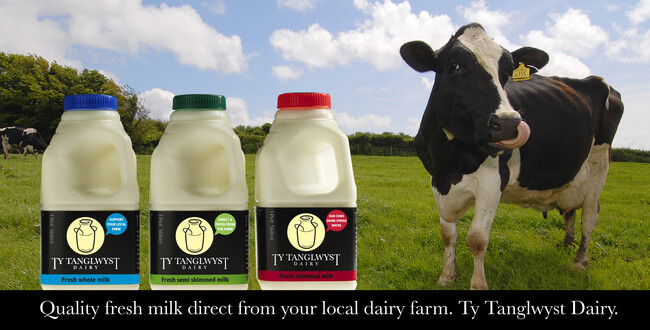
Getting a regular supply of high-quality milk also puts the emphasis on producing high quality silage, and the farm has expanded the area farmed through rented land, to ensure there’s an adequate supply of grass and cereal crops to enhance milk production.
Grass silage forms the lion’s share of the ration, but maize, plus whole crop wheat and barley also have a key role to play.
And with Kverneland 2832 and 2840 plain mowers providing a 7m front/rear combination, and a Kverneland tedder for hay and haylage, the farm takes full control of all its silage requirements. The only exception is maize, which is harvested by local contractor R&L Anthony.
“We have plenty of capacity, so we choose to mow grass when the conditions are right,” he says. “We don’t see any advantages in using a mower conditioner, and the plain mowers also let us mow the whole crop too. And everything is picked up using our forage wagon, delivering a 20mm chop length.”
“The base ration gives us 35 litres, with in-parlour feeding providing a top-up using RFID tags,” he says. “We do let our herd graze on all land adjacent to the farm – it’s important for our brand, that our customers see the very best in animal health and well-being.”

